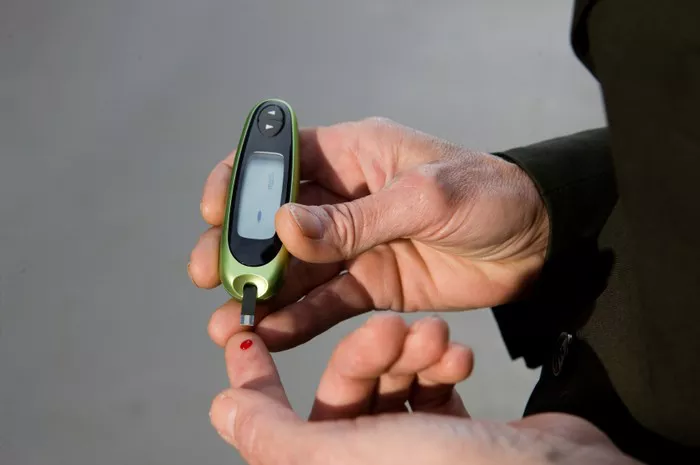Managing blood sugar levels is a crucial aspect of diabetes care. One key metric used in this management is the A1C test, which provides an average of a person’s blood sugar levels over the past two to three months. Understanding what the average blood sugar levels for A1C mean is vital for individuals with diabetes, healthcare professionals, and caregivers. This article will explore the relationship between A1C and average blood sugar levels, how the A1C test works, its significance, and how to maintain optimal levels.
What is A1C?
Definition of A1C
The A1C test, also known as glycated hemoglobin or HbA1c, measures the percentage of hemoglobin in the blood that is coated with sugar. Hemoglobin is a protein in red blood cells that carries oxygen. When blood sugar levels are high, more sugar binds to hemoglobin, resulting in a higher A1C percentage.
Why is A1C Important?
The A1C test is a critical tool for diagnosing and monitoring diabetes. It reflects the average blood sugar levels over a period of two to three months, providing a broader picture than daily blood sugar readings. Regular monitoring of A1C can help in assessing the effectiveness of diabetes management strategies and in making necessary adjustments to treatment plans.
A1C and Diabetes Diagnosis
The A1C test is often used to diagnose diabetes and prediabetes. According to the American Diabetes Association (ADA), the following A1C levels indicate the status of an individual’s blood sugar control:
Normal: A1C below 5.7%
Prediabetes: A1C between 5.7% and 6.4%
Diabetes: A1C of 6.5% or higher
These thresholds are important for identifying individuals at risk of developing diabetes and for initiating appropriate management strategies.
Average Blood Sugar Levels Corresponding to A1C
Understanding the Relationship
The A1C test provides an estimate of average blood sugar levels in milligrams per deciliter (mg/dL) over the previous two to three months. There is a direct correlation between A1C percentage and average blood sugar levels. The following formula is often used to convert A1C to average blood sugar:
Average Blood Sugar (mg/dL)=(A1C×28.7)−46.7\text{Average Blood Sugar (mg/dL)} = (A1C \times 28.7) – 46.7
This formula helps translate the A1C percentage into a more familiar measure for many patients, aiding in their understanding of how their blood sugar levels affect their overall health.
Average Blood Sugar Levels for Different A1C Percentages
Here is a breakdown of average blood sugar levels corresponding to various A1C percentages:
- A1C 5.0%: Average Blood Sugar ~ 97 mg/dL
- A1C 5.5%: Average Blood Sugar ~ 111 mg/dL
- A1C 6.0%: Average Blood Sugar ~ 126 mg/dL
- A1C 6.5%: Average Blood Sugar ~ 140 mg/dL
- A1C 7.0%: Average Blood Sugar ~ 154 mg/dL
- A1C 7.5%: Average Blood Sugar ~ 169 mg/dL
- A1C 8.0%: Average Blood Sugar ~ 183 mg/dL
- A1C 8.5%: Average Blood Sugar ~ 197 mg/dL
- A1C 9.0%: Average Blood Sugar ~ 212 mg/dL
- A1C 9.5%: Average Blood Sugar ~ 226 mg/dL
- A1C 10.0%: Average Blood Sugar ~ 240 mg/dL
Significance of Maintaining Optimal A1C Levels
Maintaining an A1C level below 7.0% is often recommended for many adults with diabetes. However, individual targets may vary based on a person’s age, health status, and risk factors for diabetes complications. The key benefits of maintaining an optimal A1C level include:
Reduced Risk of Complications: Higher blood sugar levels can lead to long-term complications such as neuropathy, retinopathy, and cardiovascular disease. Keeping A1C levels in check can significantly lower these risks.
Improved Quality of Life: Proper blood sugar management can enhance overall well-being, increase energy levels, and improve mood.
Better Diabetes Control: Regular monitoring of A1C levels allows individuals and healthcare providers to evaluate the effectiveness of diabetes management strategies and make necessary adjustments.
How is A1C Tested?
The Testing Process
The A1C test is a simple blood test that can be performed in a healthcare provider’s office or laboratory. The process typically involves the following steps:
Blood Sample Collection: A healthcare professional will draw a blood sample, usually from a vein in the arm. This process is quick and generally involves minimal discomfort.
Laboratory Analysis: The blood sample is sent to a laboratory, where it is analyzed to determine the percentage of hemoglobin that is glycated.
Results Interpretation: Results are typically available within a few days. The healthcare provider will discuss the results with the patient, explaining what they mean and how they relate to diabetes management.
Frequency of Testing
For individuals with diabetes, the A1C test should be performed at least twice a year if blood sugar levels are stable and within target ranges. For those whose treatment has changed or who are not meeting their targets, testing may be recommended every three months.
Factors Affecting A1C Levels
Several factors can influence A1C levels, and understanding these factors can help individuals with diabetes better manage their condition.
1. Blood Sugar Variability
Fluctuations in daily blood sugar levels can impact A1C results. Frequent high and low blood sugar episodes can cause the average to vary significantly. Maintaining consistent blood sugar levels through diet, exercise, and medication is essential for accurate A1C readings.
2. Hemoglobin Variations
Conditions that affect hemoglobin levels can influence A1C results. For instance, anemia or hemoglobinopathies can cause false readings. Individuals with these conditions should inform their healthcare providers to ensure accurate interpretations of A1C results.
3. Time of Testing
A1C reflects average blood sugar levels over two to three months. Therefore, the timing of the test relative to recent blood sugar fluctuations can affect results.
4. Lifestyle Factors
Diet, exercise, and medication adherence play significant roles in blood sugar control. A balanced diet, regular physical activity, and proper medication management are essential for maintaining stable blood sugar levels and optimal A1C.
How to Lower A1C Levels
For individuals with elevated A1C levels, there are several strategies to help bring them down effectively.
1. Dietary Changes
Focus on Whole Foods: Incorporating more whole grains, fruits, vegetables, and lean proteins can help stabilize blood sugar levels.
Limit Sugars and Refined Carbs: Reducing the intake of sugary beverages, sweets, and refined grains can help lower blood sugar spikes.
Portion Control: Managing portion sizes can prevent overeating and help maintain balanced blood sugar levels.
2. Regular Physical Activity
Engaging in regular exercise can significantly impact blood sugar control. Physical activity helps the body use insulin more effectively and can improve overall cardiovascular health. Aim for at least 150 minutes of moderate aerobic activity each week, along with strength training exercises.
3. Medication Management
For many individuals with diabetes, medication is a vital component of blood sugar management. Ensuring adherence to prescribed medications and discussing any concerns with healthcare providers can help optimize diabetes control.
4. Monitoring Blood Sugar Levels
Regularly checking blood sugar levels allows individuals to see how their lifestyle choices affect their glucose levels. Keeping a log can help identify patterns and areas for improvement.
5. Stress Management
Stress can negatively impact blood sugar levels. Practicing stress-reduction techniques such as meditation, yoga, or deep breathing exercises can be beneficial for overall health.
The Role of Healthcare Providers
1. Regular Check-Ups
Regular visits to healthcare providers are essential for monitoring A1C levels and overall diabetes management. During these visits, patients can discuss their concerns, review their blood sugar logs, and adjust their treatment plans as needed.
2. Education and Support
Healthcare providers can offer education on diabetes management strategies, including nutrition, exercise, and medication use. Support groups and diabetes education programs can also provide valuable resources for individuals managing their condition.
3. Personalized Care Plans
Each individual’s diabetes management plan should be tailored to their unique needs and circumstances. Healthcare providers can help create personalized care plans that consider factors such as age, lifestyle, and any existing health conditions.
Conclusion
Understanding the average blood sugar levels for A1C is crucial for effective diabetes management. The A1C test provides valuable insight into long-term blood sugar control and helps identify areas for improvement. By maintaining optimal A1C levels, individuals with diabetes can reduce their risk of complications, improve their quality of life, and achieve better overall health.
A combination of a balanced diet, regular physical activity, medication adherence, and ongoing monitoring are key components of successful diabetes management. Collaborating with healthcare providers ensures that individuals receive the support and guidance they need to navigate their diabetes journey effectively.
Related topics:



























